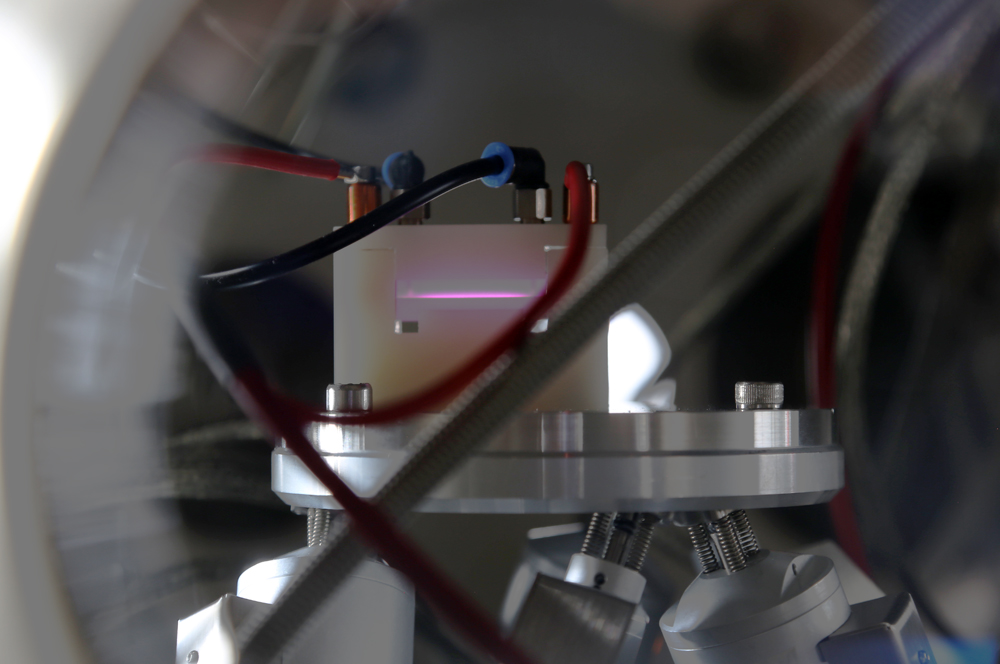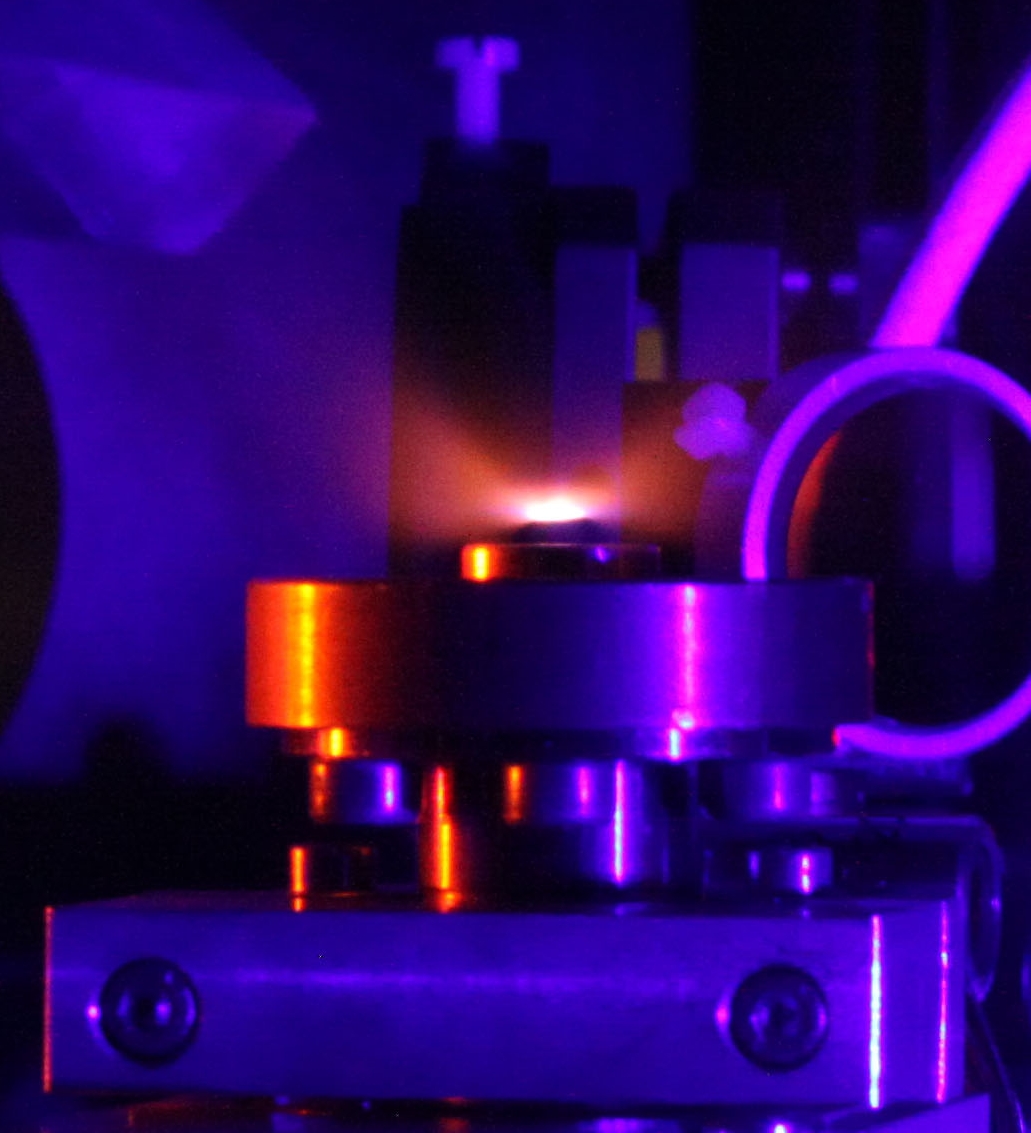Laser Wakefield Acceleration of Electrons
The acceleration of electrons using ultra-short laser pulses is a central area of research at the Helmholtz-Institute Jena. These laser pulses become relativistically intense as they are focused into a gas to a focal spot size smaller than 10 µm in diameter and are capable of driving relativistic plasma waves in the ionized gas. The electric fields that arise in the plasma wave can achieve field strengths of over 100 GV/m, which is more than a factor of 1000 above the typical field strengths generated in conventional, radio-frequency based particle accelerators. Electrons can be accelerated by these fields, obtaining kinetic energies in the GeV range over short distances of only a few centimeters. The generated electron bunches exhibit pulse durations of only a few femtoseconds, shorter than the driving laser’s duration, and also achieve a very small beam emittance. Due to their properties these electron bunches are therefore well suited, among other applications, for generating secondary radiation over a broad spectral range, either in the plasma itself, using a counter-propagating laser pulse or in an external undulator system. Such a photon source could well match many properties of a conventional synchrotron source; however, it could advantageously fit inside a typical university lab space.
Located at the Helmholtz Institute Jena are two laser systems, JETi200 and POLARIS, with which the Laser Wakefield Acceleration (LWFA) mechanism can be investigated. While both lasers currently operate at peak powers near 200 TW, their differing pulse parameters (e.g., duration and energy) allow LWFA experiments to be explored in different regimes. The JETi200’s 17 fs pulse duration and 4 J energy on target are well suited for reaching the “bubble”-regime of LWFA, where a strongly non-linear plasma wave is driven which subsequently accelerates electrons to “modest” kinetic energies of several hundred MeV to a few GeV. In comparison, POLARIS’ longer pulse duration of just under 100 fs, and higher pulse energy of 17 J will enable electron bunches to be accelerated to several GeV of kinetic energy. Empirically, the generation of electron bunches with several GeV kinetic energies has relied on coupling the laser pulses into a wave guiding structure; in this case, a capillary made from sapphire is used. By filling the capillary with hydrogen gas and discharging a high-voltage through the capillary, the hydrogen gas is ionized and plasma is formed. Plasma heating at the nanosecond timescale then creates a parabolic density profile of the plasma, and with properly selected system parameters the natural diffraction of the focused laser beam is suppressed in the plasma-based wave guide allowing the laser pulse to propagate over centimeter-long distances without significant changes in its focal spot size. This guiding of the laser pulse allows the laser’s intensity to remain high over longer distances, so that the plasma wave, central to LWFA, can accelerate electron bunches to even higher kinetic energies.
Contact:

